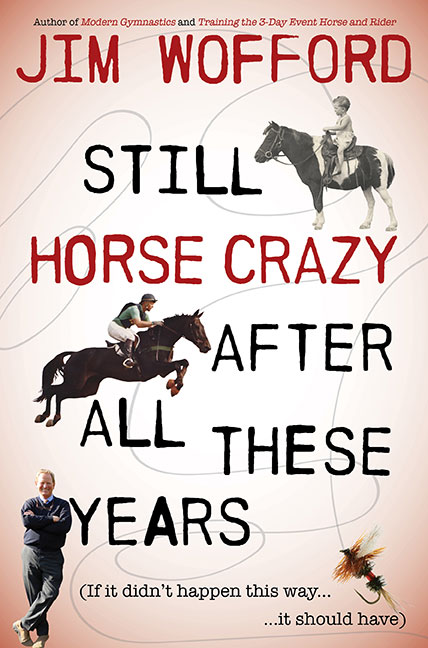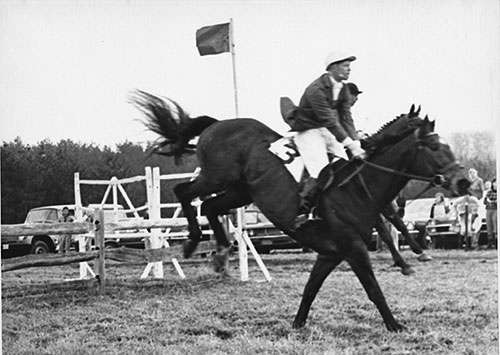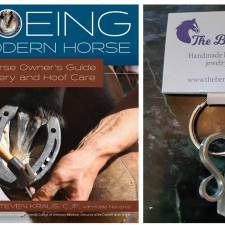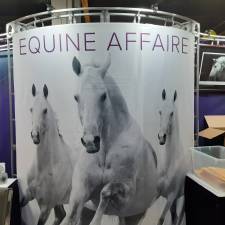
By Jim Wofford
My magical 1962 summer started as soon as I landed in Ireland. Imagine getting in a taxi at the old Dublin Airport and immediately falling into a serious debate with the driver as to whether Arkle or Mill House was the greatest steeplechaser that Ireland had ever produced, or “was dere a better in all tha Emerald Isle?” By the time I got to my destination, I had a lead on two of the “greatest young leppers” the world had ever seen, a tip on the 4:30 race at Punchestown Racecourse, and an invitation to an IRA fundraiser that evening at The Grasshopper, in the village of Clonee.
It was a wet summer, even for Ireland. The sun was out the morning I landed in Dublin and shone again the day I left—and it rained every day in between. When I mentioned this, I was told, “Yes, but it’s a dry rain.” The Irish have a subtle conception of the truth.
Despite the weather, I rode young sales horses every day for the next few weeks. The Captain had a steady stream of clients, and John and I presented likely prospects to them. Whatever technique and polish I had gained at Culver was going to have to suffice; at that time, the Irish were long on horse sense, but short on technique. It took a fair amount of “git ‘er done” to ride uneducated young stock over colored poles and up and down the few banks and ditches we had on the place.
I was on a strawberry roan mare one morning and had gotten the bucks out of her by the time The Captain drove up. I showed him her new tricks by circling a few times, riding a couple of figure eights, and changing back and forth from trot to canter. The Captain seemed happy enough with the progress of her flatwork and told me to pop her over the bank at the end of the field. “Okay,” I said. “Has she been over it before?” “Ah, no,” was the reply, “but her dam was a great lepper.” I wouldn’t say this one was great, but she had a good attitude, and we eventually scrambled back and forth successfully. I learned a lot about horses that summer, including what happened when horses from a good gene pool crossed paths with enthusiastic ignorance. Horses have an extraordinary desire to please humans; they will put up with our most outlandish requests, if asked in a determined and confident manner. This was the first time I noticed this about horses, but it wouldn’t be the last.
I was spending plenty of time in the saddle, but my chances for instruction were limited; when I got the chance to take a clinic with Major Joe Lynch, the coach of the Irish Olympic eventing team, I was ready. Joe had been in the British cavalry most of his life, and during World War II, he was a training officer in Scotland preparing troops for combat in North Africa, Sicily, and then Italy. Like many of his countrymen, he had a marvelous command of the English language, including a career soldier’s use of profanity and obscenity, as well as an instinctive understanding of horses, and a deep appreciation of whiskey.
Given some of the more lurid tales he told after hours, we suspected that Joe was either about 105 years old or more than capable of embellishing a story. His age or his nightly intake could affect his coaching, and I have painful memories of him, still under the weather from the night before, standing on top of a cold, wet, wind-swept hill, red-faced and screeching at me in a British accent while obviously forgetting my name, “You theah, come heah, you [expletive deleted] imbecile, you, YOU! …TREATY STONE! Come heah!” (He never forgot your horse’s name, but you? Not so much.)
Treaty Stone, the horse Captain Harty had given me to ride at Joe’s clinic, was a grey, seven-eighths Thoroughbred gelding, and one of the laziest horses I have ever ridden. I don’t know if The Captain was mad at me, or just saw a chance to get his horse off the farm and educated at the clinic with Joe. Whatever the reason, Treaty took all the leg I had to get over the jumps—and then some. It wasn’t exactly smooth and polished, but at least I got around. It must have looked a little better than it felt; John later told me that when I finished, Joe sniffed, and remarked that it “wasn’t too bad, for an American.”

I was sad to leave Ireland, where I had spent most of my time with horses, thus continuing my equestrian education. I now faced new challenges. When I left Dublin, I was headed for the University of Colorado, once again sentenced to academic incarceration.
This excerpt from Still Horse Crazy After All These Years by Jim Wofford is reprinted with permission from Trafalgar Square Books (www.horseandriderbooks.com).
There are lots of good reads in our section on Books.












